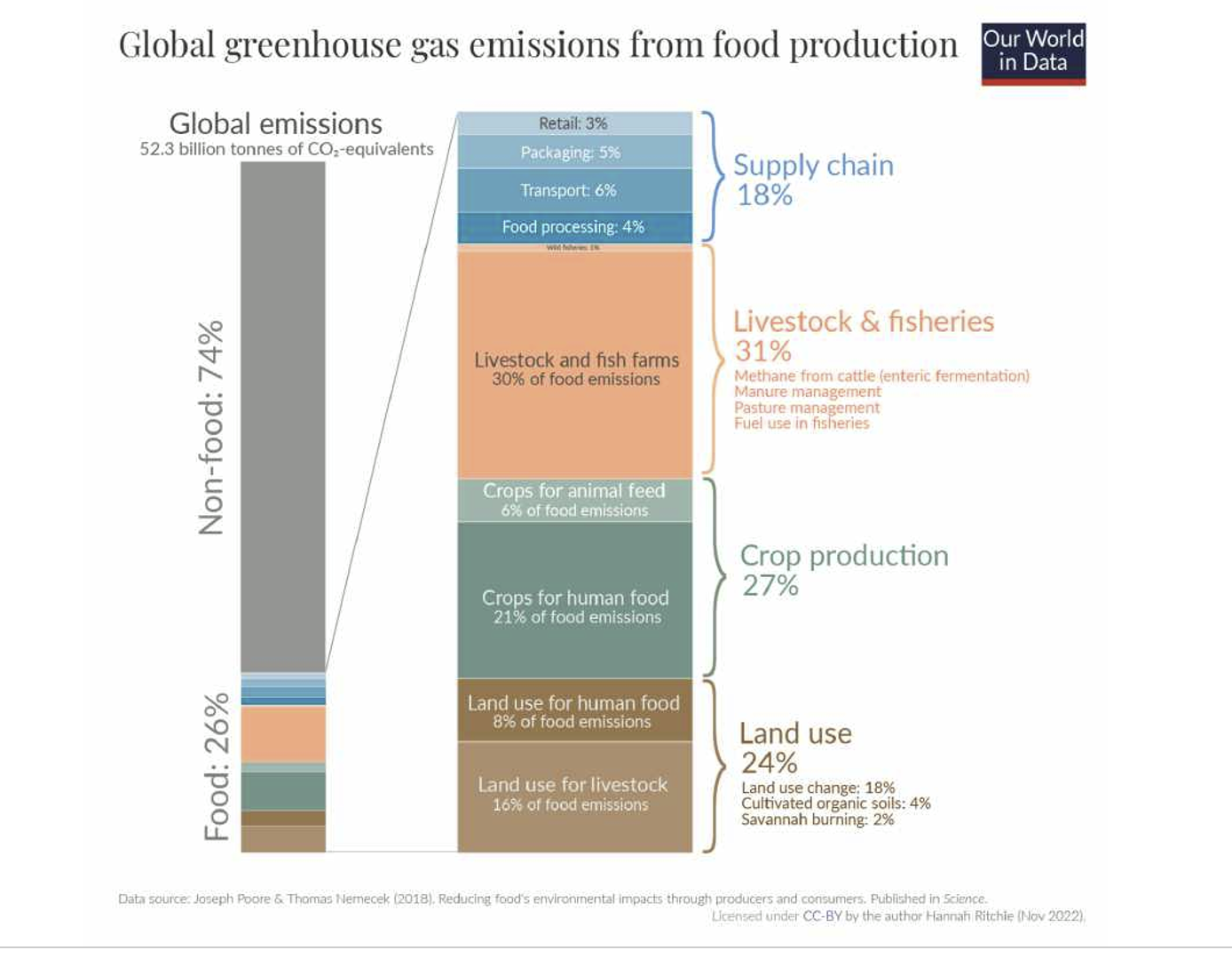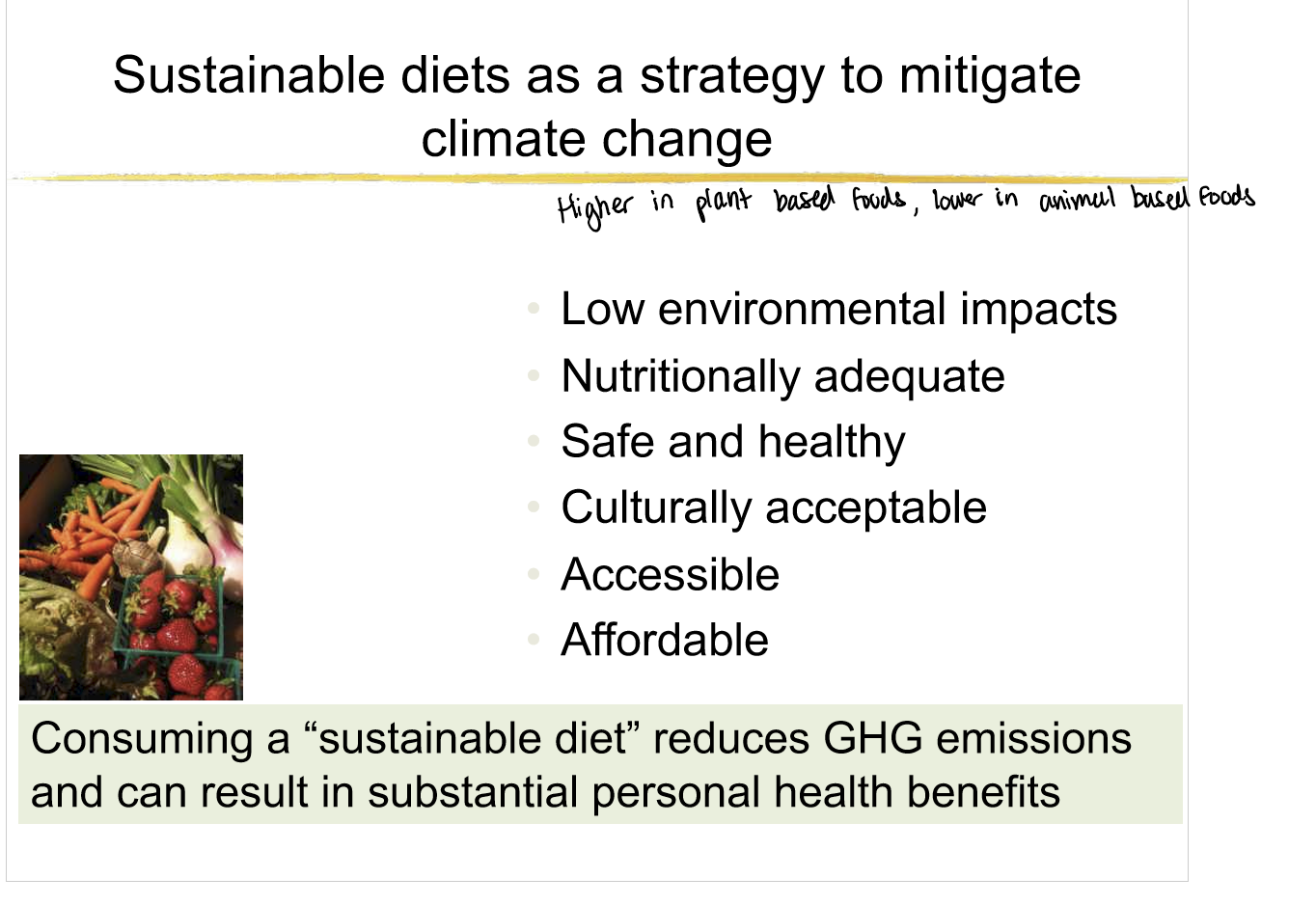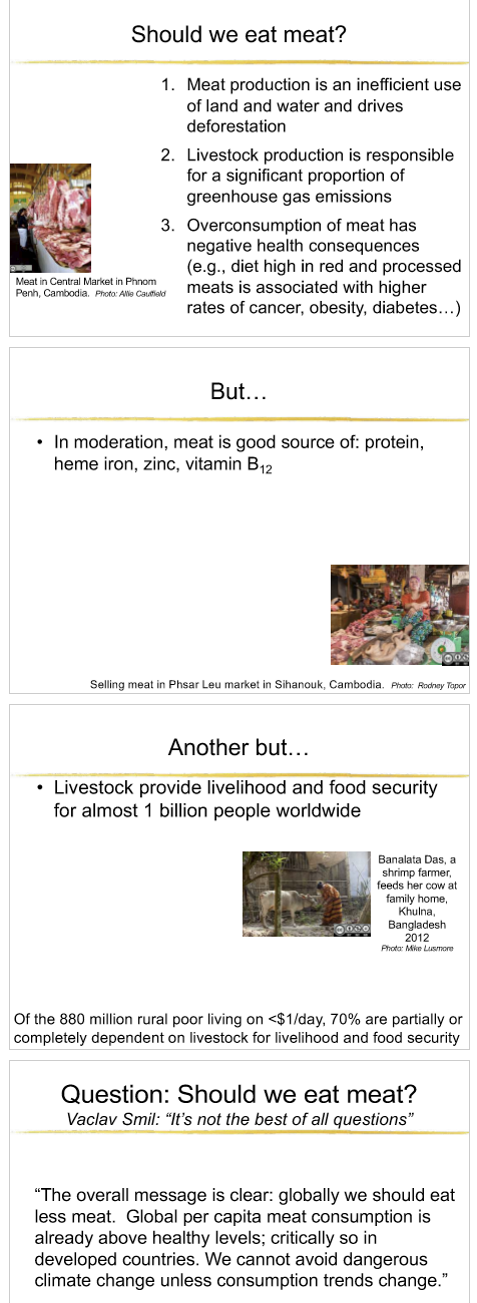asynchronous Week 9: Focus on Climate Change
1/6
There's no tags or description
Looks like no tags are added yet.
Name | Mastery | Learn | Test | Matching | Spaced |
|---|
No study sessions yet.
7 Terms
Summarize key aspects of what is known about climate
change and its impacts
food and agriculture are key contributors of the GHG emissions

Explain the how food and agriculture (particularly raising
livestock for animal-source foods) contribute to climate change
livestock production accounts for 77% of agricultural land and 30% of land surface of the planet
livestock provides 18% of food energy and 37% of protein

Describe (with specific examples) ways in which increases in
global temperatures affect food crop production
through impacts on plant biology
decrease pollination, decrease photosynthesis, increase in dehydration
glaciers melt, rising sea level
rivers disappear, irrigation systems challenged
ex. himalayas that provide water for 1.4 billion people
rising sea level affects river deltas in asia where rice is produced
change in weather patterns= more drought and heat waves
decrease in yields of grains and fruits
Differentiate between adaptation and mitigation responses to
climate change and give examples of each approach
adaptation: on a local level which is a long term ongoing process
benin: fingerponds trap wild fish during low water periods increasing dietary diversity and income……plant dry season crops on dykes
alternate income when crops fail: baking and selling bread
lowland and highland equal distribution between farmers
mitigation: on a global level where individual actions add up and the importance of political will
sustainable diet
Provide specific examples of how farmers in low-income
countries have adapted to effects of climate change

Define what is meant by a “sustainable diet” and consider
whether dietary guidance should prioritize sustainable diets

Critically evaluate & answer question, “should we eat meat?”
